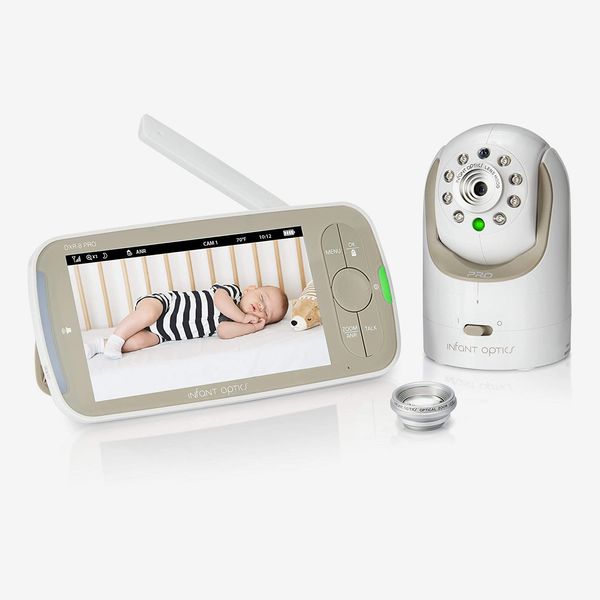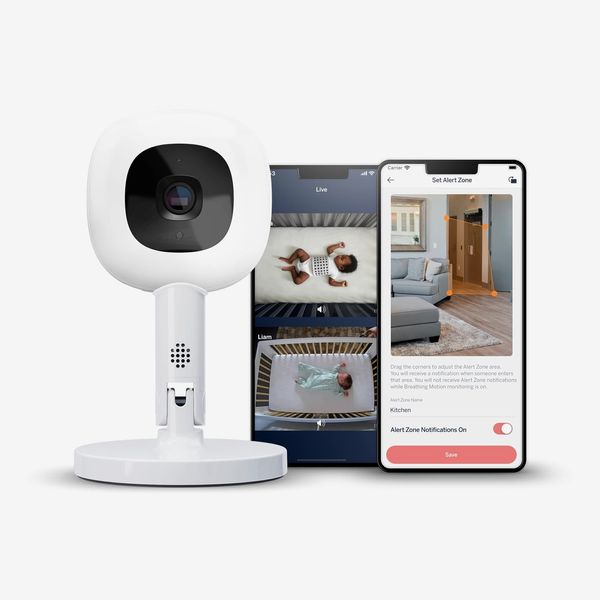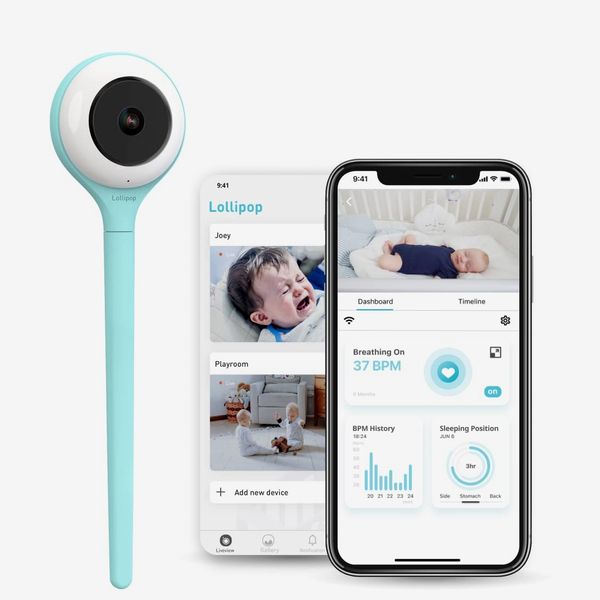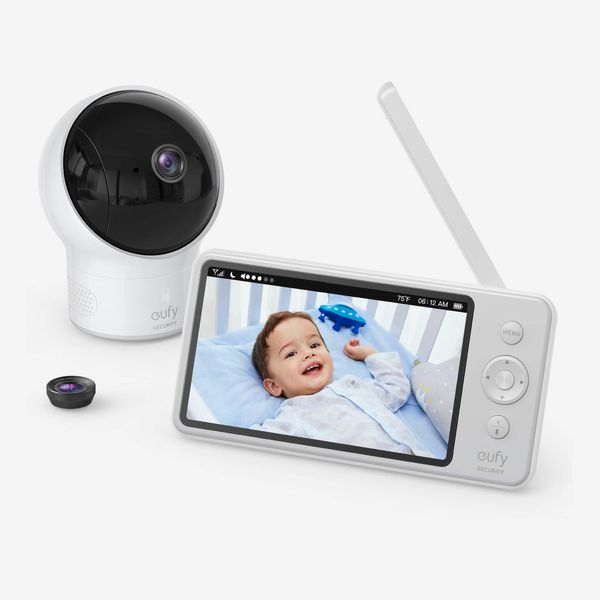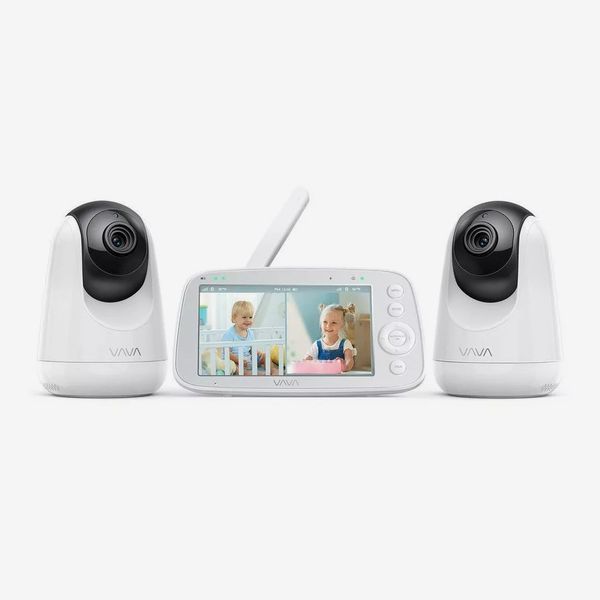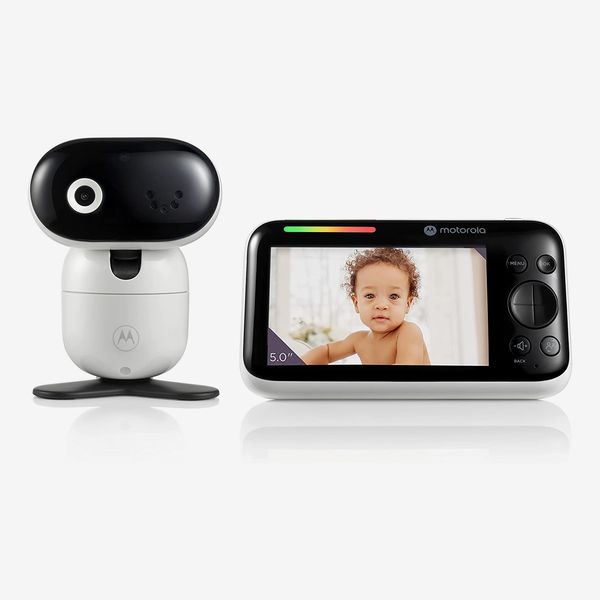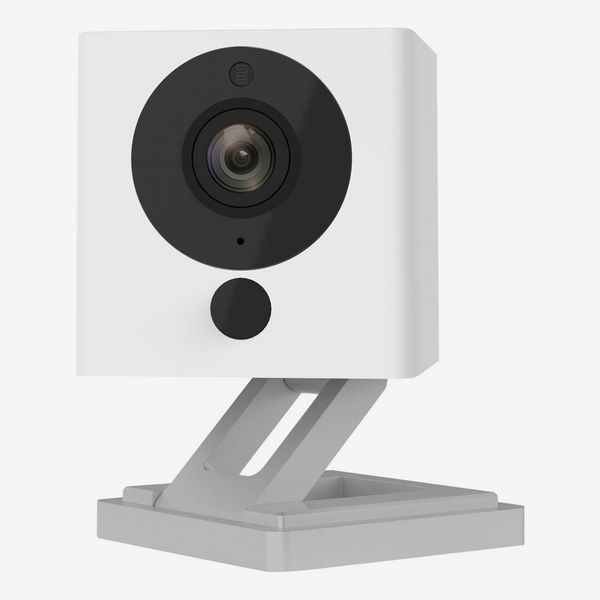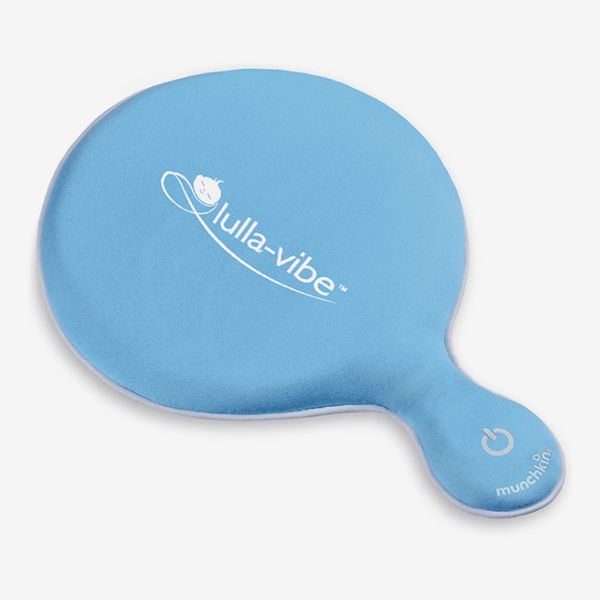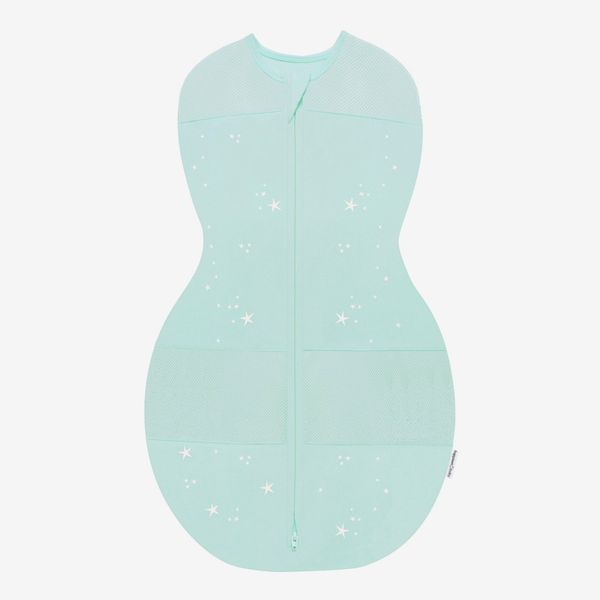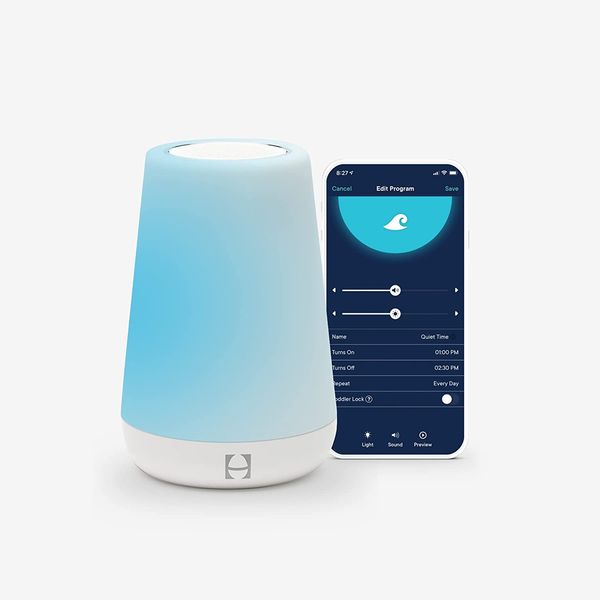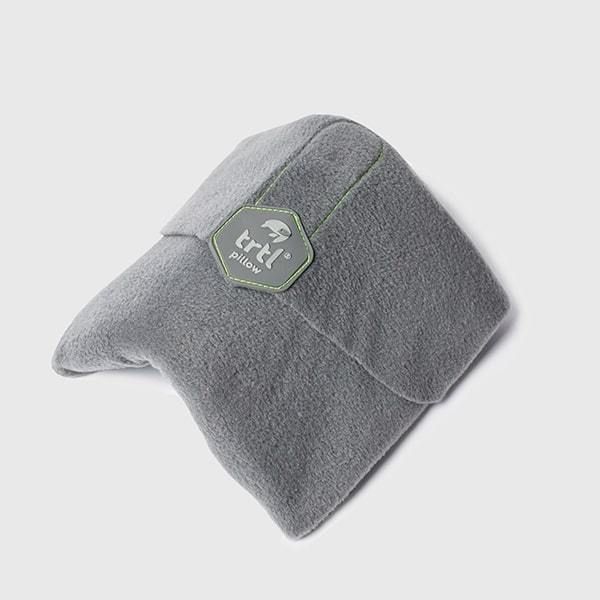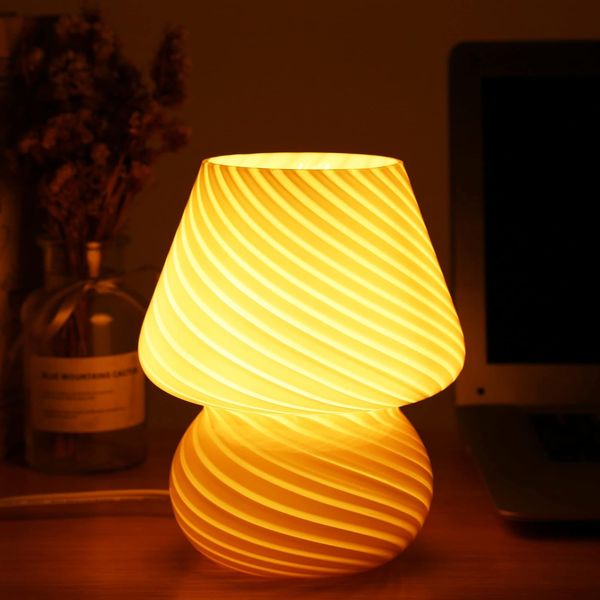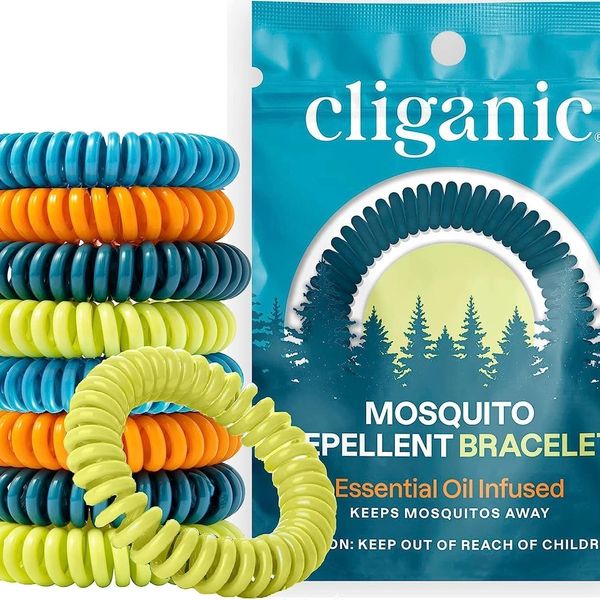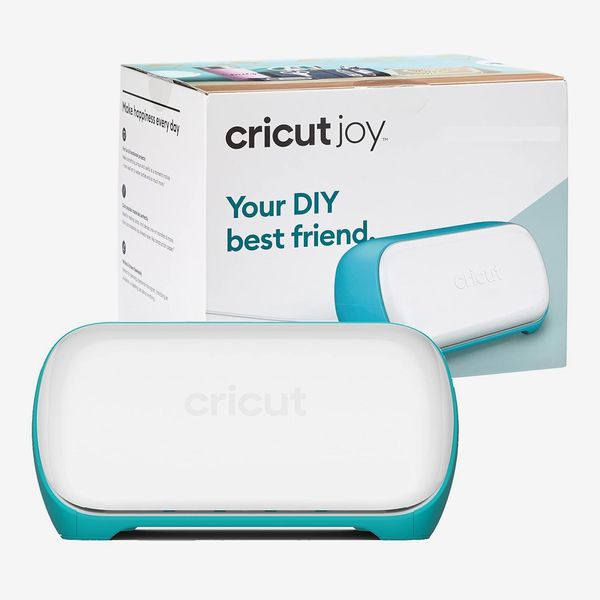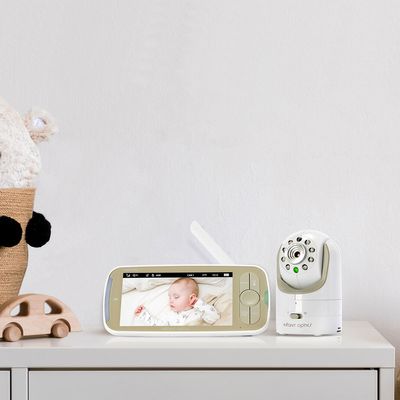
In this article
A baby monitor at its most basic allows you to see and hear your child while they sleep in another room. A traditional one uses local radio frequency, while a new crop of Wi-Fi-enabled monitors offer additional features like tracking sleep patterns, growth, and breathing. As a mom of two young boys, I’ve learned over the years that the most important thing a baby monitor should do is display your baby clearly and reliably. The rest is extra. But with so many options out there, from audio-only monitors to high-tech biometric-tracking devices, choosing one that’s right for your family can feel daunting.
According to Jennifer LaBracio, the gear editor at the baby-registry website Babylist, the right baby monitor will depend on “the space you live in and your personality and parenting style.” For example, a family that lives in a big house might need something different from one that lives in a smaller apartment. A smart monitor that can analyze sleep patterns might make some parents feel more confident, but it could cause others undue stress. To help you navigate the vast universe of baby monitors, I tested several different models over the years with my kids (ages 4 and 1) and also consulted experts, including parenting bloggers, sleep consultants, and parents, about their favorites. If I’m being honest, no monitor is perfect, though a couple come close. My recommendations below include everything from traditional video monitors to “smart” devices that can track how your baby is sleeping to a simple and truly affordable audio monitor, should that be all you require. Below, the eight best baby monitors for every family and budget.
What we’re looking for
Type
The biggest decision you’ll have to make is whether you want a baby monitor that uses a local radio frequency or one that’s Wi-Fi enabled. A local video baby monitor uses a radio-frequency-based system to transmit sight and sound and requires both a camera and a “parent unit” (a.k.a. a separate viewing device or screen), while a Wi-Fi monitor usually only comes with the camera and requires a phone app to view the feed. There are pros and cons to both. The connection on a standard local video monitor is more reliable than on a Wi-Fi-enabled one since it doesn’t rely on the internet, which could go out at any given moment. It’s more secure and is less likely to be hacked since it’s not on any sort of network. But this means you can’t watch the baby when you’re outside the house. Plus the range between the camera and the display unit can be limited depending on the size and layout of your home. (All the devices on this list top out at 1,000 feet, which is on the higher end.)
Wi-Fi monitors allow you to check in on your child from the office or a rare date night out — or anywhere in the world, for that matter, via an app on your phone, giving you more flexibility and control. While most companies promise a secure and private connection, there’s always the possibility of getting hacked, which sounds terrifying but actually doesn’t happen that often. Wi-Fi monitors are generally more expensive. But an internet-connected device means it can be a smart one, providing you with a lot more data tracking and insight into how your baby sleeps. They can also be invaluable for sleep-training purposes, according to Elizabeth King, the founder of the sleep-consulting company Sleep Baby. King encourages parents to “take what a monitor tells you and use your gut and your parenting knowledge to react to your baby.”
Video display
Because the point of a monitor is to keep eyes on your baby when you’re not in the room with them, being able to see your child clearly is important. Look for a monitor that provides a high-quality HD-video feed (and sound), and if you’re using one with a physical screen, make sure it’s big enough (most of the non-smart units on this list have five-inch screens).
Pay attention to the physical camera as well. Some Wi-Fi monitors’ cameras are fixed, meaning you can’t pan, tilt, zoom, or otherwise adjust them remotely, which you can do with a radio-frequency unit. But depending on the positioning of the camera, you should be able to get a clear view. A lot of the smart monitors are placed directly over the crib, giving you a bird’s-eye view of your little one, which takes care of the problem.
Features
At its most basic, a video monitor will show you what’s going on in your baby’s room. Non-Wi-Fi models like the ones on this list come with other convenient features to enhance that experience, including night vision, a two-way talk radio, a room-temperature indicator, a time display, and remote pan, tilt, and zoom abilities.
Smart monitors come with all these features and then some. The latest crop uses the camera — sometimes with accessories, sometimes without — to track the sleep habits of your baby and other data such as breathing patterns. This turns the monitor into something of a virtual sleep coach that analyzes when your child falls asleep (and how long it takes them to do so), how long they sleep for, whether they wake up during the night, and more. A smart monitor can help you sleep better at night, especially if you’re anxious about whether your baby is breathing normally, for instance. That being said, some of this data could be unnecessary for most parents, so think about what will actually be useful to you before you settle on a monitor.
Still, Natalie Nevares, founder of Mommywise and a sleep-training expert who coaches new parents, reminds us that any monitor — even the most sophisticated like the Nanit (see below) — won’t be 100 percent accurate in the sleep tracking it provides. Sleep consultant Jennifer Metter adds that any data you get from a smart monitor should be considered in consultation with your baby’s doctor, because “parents do not know how to identify what normal, healthy sleep looks like for babies and children.” And as much as LaBracio loved having access to sleep insights provided by the Nanit for her infant, she agrees that it’s helpful to be familiar with infant sleep patterns, so you’re not too caught up in the details that the analytics provide. “If you’re a person who is going to get more anxious from seeing the data, then it’s probably not the monitor for you.”
Best baby monitor overall
Type: Non-Wi-Fi video monitor, 1,000-foot range | Video display: 720p HD camera, 5-inch display | Features: 270-degree pan (135 degrees left and right); 110-degree tilt (95 degrees up and 25 degrees down); LED sound indicator, active noise-reduction technology; Connect up to four cameras
The Infant Optics DXR-8 Pro baby monitor is my favorite monitor out of the many I have tried over the five years I have been a parent. It’s also popular among Amazon reviewers, Babylist users, and Strategist staffers. (New York Magazine deputy editor Alexis Swerdloff used it with her second child.) I started off with the basic (and extremely popular) DXR-8 model when my older son was born, then upgraded to the new one a couple of years later, and it’s still the one I use today now that he’s almost 5 years old. It’s so easy to use that I recently bought a second camera to place in my younger son’s room so that I can have eyes on both of them on a single monitor. After nearly three years of everyday use, it’s still as reliable as ever. It connects as soon as you turn it on, which I honestly can’t say about all the other ones I’ve tested. The Pro has all the features of the original — but better. One of the main upgrades is the five-inch HD screen, a noticeably larger, crisper display than the 3.5-inch original. As I wrote in a review of the Pro, making the switch was quite literally like going from low- to high-def. The enhanced night vision on the 720p video feed is so clear we could actually see whether my son’s eyes were open or not, which we couldn’t do before. It has an improved coverage range of 1,000 feet, which is helpful if you live in a larger home. The Pro also comes with active noise-reduction technology that reduces background noises (but it should be noted that it doesn’t actually work with a sound machine on).
Another feature that sets the DXR-8 Pro apart from other local video monitors is its LED sound bar, a favorite feature of Nevares’s, who uses the older device as a backup on her consults in case the Wi-Fi cuts out on a smart monitor. The audio indicator allows you to turn off the sound (and the screen) but still see whether there’s noise coming from the room by way of LED lights that flash green and red. And as I mentioned above, it’s really built like a tank. My kids have yanked the camera off the dresser more than a dozen times, and it has never once broken or even cracked. The screen unit has also been thrown across the room and manhandled by two zealous kids and has stayed in one piece. I will note that the battery life on the parent unit is not great, even if you get a replacement battery, though it will last a whole night as long as you’re not constantly fiddling with it. For its ease of use, durability, and image quality, it’s my overall choice for best baby monitor.
Best Wi-Fi baby monitor
Type: Wi-Fi smart monitor | Video display: 1080p HD camera | Features: Sleep metrics, optional wearables
If you’re looking for a smart, Wi-Fi-enabled monitor that can provide you with insights into how your baby is sleeping and more, consider the Nanit. The over-the-crib smart monitor received the most recommendations, with five of our experts telling us it’s a favorite. It’s also the “backup” monitor I use in the baby’s room. In addition to offering standard video-monitoring capabilities, it provides data, including sleep metrics, via its app. The bird’s-eye camera captures real-time HD-quality video and uses what the company calls “computer vision” to track whether your child is awake, sleeping, or fussing — no wearables required. Nanit synthesizes this data to generate nightly sleep reports and sleep scores, even providing tips on how to help your baby sleep better. As the Bump’s executive editor, Lauren Kay, puts it, “The Nanit is a two-in-one monitor that gives you helpful training and guidance when it comes to sleep, which is different from a lot of the competitors.”
Nevares says the Nanit is her favorite of all the cameras she’s used over the years. LaBracio loves it, too, telling us she recommends it all the time for its data-tracking ability. (It’s one of the most popular smart monitors among Babylist users and, anecdotally speaking, among new parents.) “You can pick up on patterns and sort of take a step back and see how your baby is sleeping the whole night,” she says. Jennifer Saxton, the founder of the Tot Squad, loves the monitor’s sleep-tracking feature, saying it helps eliminate the guesswork of trying to figure out how long a baby has been asleep. “The data tracking helps me understand exactly when the baby fell asleep (so I can predict how long I have until she will be up again), and the summary data of her average bedtimes and number of night wakings really help with watching trends during sleep training,” explains Saxton. Echoing this praise, Fathercraft co-founder Paul Zalewski says, “Nanit’s ‘smart features’ are actually useful,” adding that his business partner made significant changes to his son’s bedtime routine based on the Nanit’s analysis. “When a smart product can actually deliver on a promise — in this case, that promise is more sleep for babies and parents — that’s pretty spectacular.”
If you want even more insight into how your baby is sleeping, you can use the breathing band, which tracks a baby’s breathing motion in real time, without a sensor, by way of the camera. You can purchase Nanit’s smart sheets, which let you track your baby’s physical growth through the camera. To save a few bucks, you can buy everything in a bundle, but for most families, the Pro camera alone should be more than sufficient. Each camera comes with a six-month trial on the Sleep plan; after that, you’ll have to pay $50 per year. You can also choose the Memories or Milestones plans for $100 and $300, respectively, and you can learn more about all of them here. I personally think this data is less important once your child turns 1, so I didn’t consider paying for an additional year. You can still use the monitor’s basic live-video monitoring without a subscription — you just won’t have access to any of the analytics or sleep insights.
Aside from the data-tracking features of the Nanit, the basic camera function is just fine. I prefer a non-Wi-Fi monitor (see above), but I decided to test the Nanit with baby No. 2, since we needed a second monitor for his room. I appreciated being able to check in on the baby via the app even when I wasn’t home (great for nights out), and like others have said, it was helpful to be able to see some of those sleep insights. For instance, though my two boys are generally very good sleepers, the Nanit recommended putting the baby to sleep a little earlier, which hadn’t occurred to us. But one thing that frustrated me and my husband — and this might be true of Wi-Fi monitors in general — is that connectivity can be extremely unreliable. Sometimes the video feed would take a while to load or wouldn’t load at all, which is extra-annoying when you can hear your baby crying but can’t see whether he’s sitting up or just getting settled — whether you need to go in or let him be. It became so unreliable that we got that second camera for the Infant Optics, making that the main monitor in his room and the Nanit a backup. (One workaround is to keep the camera on at all times, instead of turning it off each morning.) Still, it is very convenient to be able to check in on the baby on my phone when I’m not at home, which is why we haven’t taken it down yet. When the Nanit is online and ready to go, it’s a great product.
Best (less expensive) Wi-Fi baby monitor
Type: Wi-Fi smart monitor | Video display: 1080p HD camera
For a more affordable Wi-Fi-enabled monitor that has some smart features, both LaBracio and Nevares recommend the Lollipop. LaBracio says it’s a popular choice among Babylist users because the monitor is “cute, modern, and comes in a bunch of fun colors.” Nevares likes that it’s tiny and therefore very portable. Unlike the Nanit, it requires no mounting hardware, thanks to the camera’s bendable, silicone base. “You can wrap it around the bars of the crib or put it on a dresser,” explains LaBracio. (It comes with a wall mount, should you want to coil it around that.) Nevares adds that this monitor is especially good for newborns, “because you can hook it around a crib rail and point it in any direction you want.” Like the Nanit, however, the camera is fixed and you cannot adjust it unless you physically move it. As far as its smart features go, the monitor can detect crying and other noises, whether the baby is trying to climb out of the crib, and tracks sleep patterns and monitors breathing (a free seven-day subscription to access that data is included. After that, plans start at $8 per month or $80 per year). You can pair the Lollipop with a sensor (sold separately) that monitors humidity, temperature, and air quality in the room. Other features of the camera include advanced night vision, two-way talk, a built-in noise machine, and lullabies. “For a smart monitor, it’s a cheaper option,” concludes Nevares.
Best (less expensive) non-Wi-Fi baby monitor
Type: Non-Wi-Fi video monitor, 1,000-foot range | Video display: 720p HD camera, 5-inch display screen
The Eufy, which is about $40 cheaper than the Infant Optics, is the monitor of choice for two of the experts I spoke to. “It feels like a modern tech product versus something that you would’ve seen ten years ago,” says Zalewski. “Its parent unit is slim and lightweight, the image quality is excellent, and the user interface is intuitive. Compare that to most other non-Wi-Fi monitors, and there’s a world of difference.” Like with the Infant Optics, the Eufy’s parent unit has a large, five-inch display screen, while the camera, which includes a wide-angle-lens attachment, can pan 330 degrees and tilt 110 degrees, has two-way audio, a coverage range of up to 1,000 feet, and the ability to connect to up to four cameras (sold separately) — a feature loved by Suzie Zeldin Russell, co-owner of the SmartSitting network for child-care professionals. “It’s very easy to switch between cameras, so we can watch our baby nap while checking on our toddler in the playroom,” she says. “We have recommended this monitor to countless friends and consistently get rave reviews in response. Of all the baby gear we own, this is among the very best.”
Best non-Wi-Fi baby monitor with split screen
Type: Non-Wi-Fi video monitor, 900-foot range | Video display: 720p HD camera, 5-inch display screen | Features: 270-degree pan; 180-degree tilt
This local-video monitor comes with two cameras and a split screen, allowing you to access two different video feeds from two different rooms on the same screen without toggling between the two cameras (though you can also do that if you prefer). It’s a great option for families that have two children — or simply want to check in on two different rooms on one monitor. It’s the preferred monitor of Strategist senior writer Liza Corsillo, who says that not only is it so easy to set up (“I barely had to read any instructions”), “the camera image is so clear,” even in the dark. “It has really sharp focus and moving the camera to see other parts of the room is easy and silent,” she adds. She has one camera set up in her bedroom and the other in the nursery and could easily switch from one room to the next, depending on where her baby was sleeping. Another feature she appreciates is that it’s “very sensitive so I can keep the volume turned down when I am sleeping and still hear him fussing well enough to wake me up. ” Plus, “I like not using an app, because it’s much easier to just hand the monitor to my husband or our nanny and there’s no synching anything on our phones,” Corsillo says. If you don’t need the extra camera, you can buy the single setup, which Strategist senior editor Simone Kitchens says is just as easy to operate: “Just plug in and go.”
Best Wi-Fi baby monitor with parent unit
Type: Wi-Fi video monitor with dual-mode connectivity | Video display: 1080p HD camera, 1,000-foot range | Features: Parent unit with 5-inch screen
If you’re looking for a straightforward, non-fussy, dumb (a.k.a. not smart), Wi-Fi-enabled monitor that comes with both an app and a parent unit, this model from Motorola is your best bet. With a sleek design that reminds me of the Pixar robot Eve from WALL-E, it’s great to use when you’re traveling or if you prefer a physical screen to using an app. In other words, it gives you more options. That’s because the monitor can be controlled through either the screen (as with non-Wi-Fi models) or an app. (Most Wi-Fi monitors don’t come with a separate video monitor.) “It’s different from what else is out there,” says LaBracio, as it combines the ease of a standard plug-and-go radio-frequency baby monitor with the convenience of a Wi-Fi-enabled device. It’s also super-easy to set up, like most local-video monitors, and if you don’t feel like setting up the Wi-Fi app, you can still use the screen, as LaBracio did on a recent trip. “I didn’t set up anything other than just the monitor. I plugged it in and it was ready to go,” she says. “I could carry the parent unit around the house where we were staying, and it was super-easy.” You can even use the app and the parent unit at the same time, which I’d never seen before. Something to keep in mind: When you’re using the parent unit, the range tops out at 1,000 feet. Other features include a five-inch color display, two-way talk, noise-level-indicator bars, infrared night vision, room-temperature monitoring, a wall mount, and remote pan, tilt, and zoom capabilities.
Best audio baby monitor
Type: Non-Wi-Fi, audio only, 1,000-foot range
If all you want is a no-fuss audio monitor and you don’t need to see into your child’s room, VTech’s DM221 is a favorite of LaBracio, Kay, and Dave Baldwin, a freelance journalist and the former gear, technology, and play editor at Fatherly. Using digital audio technology, the DM221 offers clear audio transmission with a range of 1,000 feet and eliminates the crackle of analog models. A two-way intercom allows you to talk to your baby, while a five-level sound indicator can visually alert you to cries. The transmitter has a soft night-light for your child, and its compact size makes it perfect for travel. Plus you can’t beat the price tag.
Best baby monitor that’s not actually a baby monitor
Type: Wi-Fi video camera | Video display: 1080p HD camera with color night vision
Instead of getting a baby-specific monitor, many families choose to use a camera from their home’s existing security system. But as LaBracio observes that people are moving away from hacking their Nest and Ring cams and increasingly opting for smart Wi-Fi-enabled baby monitors that provide analytics like the Nanit and Miku. Her prediction: “In the next couple of years, those types of higher-priced monitors will become the standard and outpace video monitors.” Still, they’re expensive and will put you out a couple hundred dollars. According to LaBracio, one newish security camera that has been gaining some buzz for its friendly price is the Wyze Cam V3. It’s what Babylist senior visual designer Tonya and mom of two uses. “I love the Wyze Cam because it’s affordable, super-easy to set up, and can be quickly moved to any room in the house,” she says. It comes with two-way communication, which she says is “great for the toddler years,” and the option to use a micro-SD card for storage, which helps her feel more secure than keeping personal data on the cloud. The Wyze Cam has 1080p color night vision, which makes it ideal as a baby monitor, and it comes with a mount that can be installed three ways. If you want something with pan, tilt, and zoom capabilities, check out the Wyze Cam Pan V3 for a few more bucks.
Some more new-parent essentials we’ve written about
Our experts
• Dave Baldwin, journalist and former editor at Fatherly
• Liza Corsillo, Strategist senior writer
• Lauren Kay, executive editor of The Bump and The Knot
• Elizabeth King, founder of Sleep Baby
• Simone Kitchens, Strategist senior editor
• Jennifer LaBracio, gear editor at Babylist
• Jennifer Metter, sleep consultant
• Natalie Nevares, founder of Mommywise
• Suzie Zeldin Russell, co-owner of SmartSitting
• Jennifer Saxton, founder of Tot Squad
• Tonya, senior visual designer at Babylist
• Paul Zalewski, co-founder of Fathercraft
The Strategist is designed to surface the most useful, expert recommendations for things to buy across the vast e-commerce landscape. Some of our latest conquests include the best acne treatments, rolling luggage, pillows for side sleepers, natural anxiety remedies, and bath towels. We update links when possible, but note that deals can expire and all prices are subject to change.
Every editorial product is independently selected. If you buy something through our links, New York may earn an affiliate commission.

